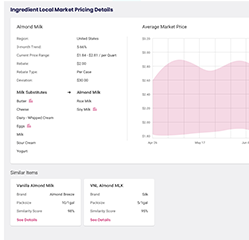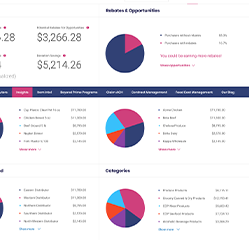In a world of technological marvels such as automated virtual assistants, self-driving vehicles, and drone delivery, why would anyone want to manually run their restaurant the old fashioned way?
If you haven’t already, it’s time to adapt to a more digital world and take what once were manual processes and turn them into a more streamlined way of operating.
There are many different areas of your restaurant where food service technology can be adopted to make the workload on your staff a lot lighter and easier. From the back-of-house to the front-of-house, technology is the answer to creating a more efficient environment.
When candidates see that your restaurant uses different technology solutions throughout the operation, it lets them know you’re prioritizing technology over traditional ways of operating, making things quicker and easier for them. Using technology could make your restaurant stand out from others, be the deciding factor for foodservice workers applying for a job and investors who want to help you grow your concept.
Since you’re automating processes and creating a more efficient work environment for your staff, why not do the same thing for your purchasing? Not only does technology save you time but it also saves you money! I mean, there is no way you are spending hours going over every line item on every invoice and finding every single possible savings opportunity available to you. Sometimes we miss what cannot be seen with a naked eye. Think about it, we use technology to pay our bills, we use technology to shop, basically we’re using technology in every aspect of our lives. Why would you not do the same when running a restaurant?
Food Cost Management Technology

Food prices can change daily. If you aren’t monitoring those prices, you could be charged incorrectly which in return hurts your bottom line. Technology provides an opportunity to see things you normally would not see when manually managing invoices and inventory ordering.
And if you don’t know your recipe costs, you could be undercharging per plate. Do you know if you’re ordering enough ingredients to support the dinner rush, or are you over ordering and wasting food?
Food cost management technology allows operators to manage inventory, food cost and cost of goods sold in real time. Not only can food cost management technology help you manage things like recipe costs, inventory, and food waste, but it can also streamline payments to all your vendors.
Procurement Technology

The foodservice industry is speeding towards e-commerce. Nowadays, purchasing decisions need to be quick, accurate, and audited to make sure you are paying the right prices. With procurement and technology joining forces, restaurants are leveling up their purchasing and reinventing the traditional processes. Procurement technology gives you visibility into your purchasing, identifies savings opportunities, streamlines workflows, and leaves less room for errors. Unlock a new level of value and when you embrace procurement technology.
Now what do you do with all this data? There’s another step, and that’s managing it all!
Data Management Technology

With the sheer amount of data your restaurant produces, are you doing anything with it? If you aren’t, you are basically throwing money away. With multiple avenues where data flows in and out of, think of all the dirty data that is being produced. Dirty data is data that has not been normalized, cleaned, or organized. Let’s face it, how can you analyze the large amount of data coming in when you don’t even have time to take a lunch break? Data management technology can clean and organize your purchasing data so operators, distributors, manufacturers, and consultants can ask – and answer – the questions that matter most to purchasing and profitability.
As we move to a more automated way of living, your restaurant should be no different. From analyzing large amounts of contracts, discovering savings, and even streamlining processes throughout your restaurant, technology gives you deeper insight into your operation. Technology can help solve many of your supply chain problems and identify sore sports, but most importantly technology can unleash the potential to differentiate your restaurant from others.
